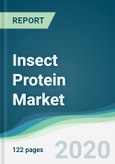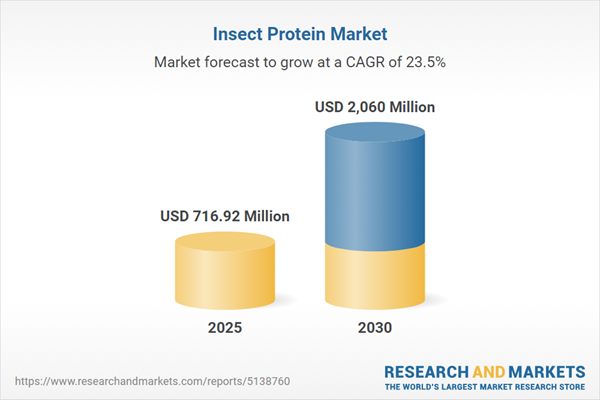With the growing global population, it is estimated that conventional agricultural and livestock farming will be rendered incapable of providing the required amount of food that is supposed to meet the dietary requirements.
This factor has gained traction due to the growing global population estimated to reach 8.5 billion in 2030, 9.7 billion by 2050, and 10.9 billion by 2,100 from 7.7 billion in 2019, according to World Population Prospects (WPP) by the United Nations. Additionally, it may be noted that the environment is under a lot of stress from activities related to agriculture and livestock, and sustaining the projected number of people further will translate into an unprecedented negative interaction with the environment.
Thus, considering the plethora of factors that influence the choice of consumers, corporate and environmental sustainability concerns have gained much focus worldwide. Moreover, factors like fresh, natural, and/or organic ingredients and environment-friendly operations are turning the tide in favor of the insect protein market. This, coupled with the growing cognizance of the negative externalities that are caused by animal husbandry activities, further encourages market players to invest in insect protein geared toward human consumption. Additionally, consumers' health and wellness aspirations are a constant determinant influencing human consumption habits.
Apart from this, generation Z is the key demographic expected to drive the market for insect protein during the forecast period. The aforesaid trajectory towards insect protein has been exemplified by the fact that chicken from birds fed on diets that include insect oil instead of vegetable oil was reported to be included among the poultry offerings of a French supermarket chain. Moreover, InnovaFeed, a French insect protein company, supplied insect oil, aiding the feed formulator, Nealia, in developing poultry ration recipes to replace soybean oil.
Insect protein market drivers:
Growing use in animal feed application
One of the major drivers of the insect protein market is the growing usage of insect protein in animal feed applications. Insect meal presents a sustainable and ethical alternative to traditional feed sources like soy and fishmeal. Unlike these conventional feed sources, insect farming has a significantly lower environmental impact, reducing deforestation and overfishing.By reducing dependence on traditional feed sources, insect protein reduces pressure on global food supplies and enhances food security. With the rising global population, the demand for protein-rich food sources is also increasing. Comprehensively, insect protein offers a promising solution to meet this increasing demand with minimal environmental impact.
The insect protein market is segmented into five regions worldwide:
Geography-wise, the market of insect proteins is divided into North America, South America, Europe, the Middle East and Africa, and Asia-Pacific. The global insect protein market is geographically diversified, with growth drivers unique to each region. North America, particularly the United States, is a mature market with high consumer demand for sustainable and nutritious food products. As of January 2024, the United States of America population, according to the US Census Bureau, was calculated to be 335,893,238. This is up 1,759,535 or 0.53% since January 2023 and up 4,443,957, or 1.34% from Census Day of April 2020. This region has an established regulatory framework and a supportive consumer base and is an ideal insect protein market.Sustainability and environmental concerns are some of the major drivers in the European region since insect farming is a relatively greener alternative to the traditional livestock industry. There is further growth in consumer demand for sustainable and healthy food products, favorable regulatory environments, and strong research and development efforts.
On the other hand, Asia-Pacific, especially China and India, is an emerging market with great potential. This region's population is growing fast, and there is an increasing demand for protein-rich foods, creating a need for alternative protein sources such as insect protein. Government support and investments in sustainable agriculture are further boosting the regional market growth.
Reasons for buying this report:
- Insightful Analysis: Gain detailed market insights covering major as well as emerging geographical regions, focusing on customer segments, government policies and socio-economic factors, consumer preferences, industry verticals, other sub-segments.
- Competitive Landscape: Understand the strategic maneuvers employed by key players globally to understand possible market penetration with the correct strategy.
- Market Drivers & Future Trends: Explore the dynamic factors and pivotal market trends and how they will shape up future market developments.
- Actionable Recommendations: Utilize the insights to exercise strategic decision to uncover new business streams and revenues in a dynamic environment.
- Caters to a Wide Audience: Beneficial and cost-effective for startups, research institutions, consultants, SMEs, and large enterprises.
What do businesses use our reports for?
Industry and Market Insights, Opportunity Assessment, Product Demand Forecasting, Market Entry Strategy, Geographical Expansion, Capital Investment Decisions, Regulatory Framework & Implications, New Product Development, Competitive IntelligenceReport Coverage:
- Historical data & forecasts from 2022 to 2030
- Growth Opportunities, Challenges, Supply Chain Outlook, Regulatory Framework, Customer Behaviour, and Trend Analysis
- Competitive Positioning, Strategies, and Market Share Analysis
- Revenue Growth and Forecast Assessment of segments and regions including countries
- Company Profiling (Strategies, Products, Financial Information, and Key Developments among others)
The insect protein market is segmented and analyzed as follows:
By Source
- Ants
- Black Soldier Flies
- Crickets
- Grasshoppers
- Mealworms
- Others (beetles, buffalo worms, silkworms)
By Application
- Animal Feed
- Food and Beverage
- Personal Care
By Geography
- North America
- South America
- Europe
- Middle East and Africa
- Asia-Pacific
Table of Contents
Companies Mentioned
- EntomoFarms
- Ynsect
- Hexafly
- Innovafeed
- nextProtein
- Inseco
- Buhler Group
- Darling Ingredients
- Aspire Food Group
- Protix
Table Information
| Report Attribute | Details |
|---|---|
| No. of Pages | 128 |
| Published | December 2024 |
| Forecast Period | 2025 - 2030 |
| Estimated Market Value ( USD | $ 716.92 Million |
| Forecasted Market Value ( USD | $ 2060 Million |
| Compound Annual Growth Rate | 23.5% |
| Regions Covered | Global |
| No. of Companies Mentioned | 10 |









